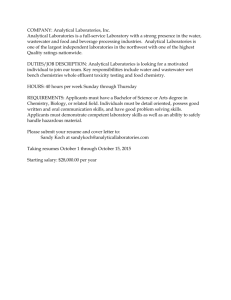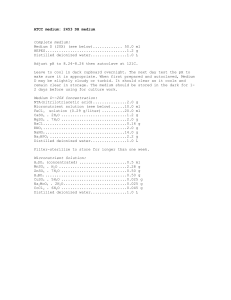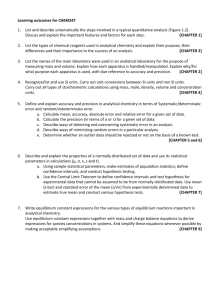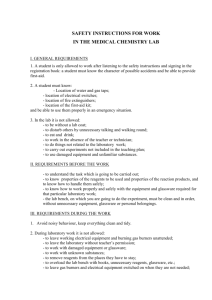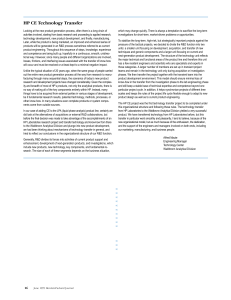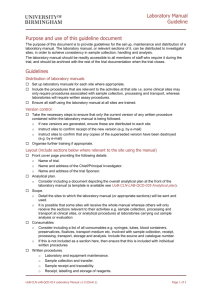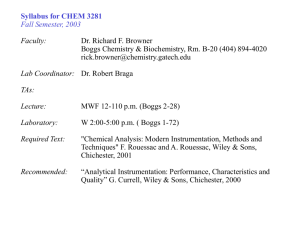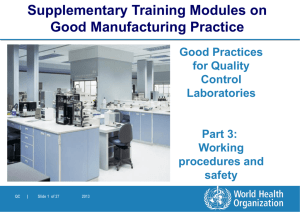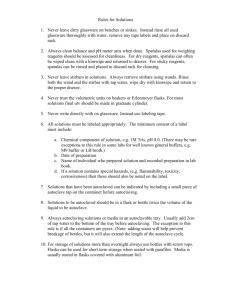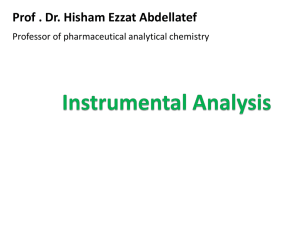Laboratory Information(word)
advertisement
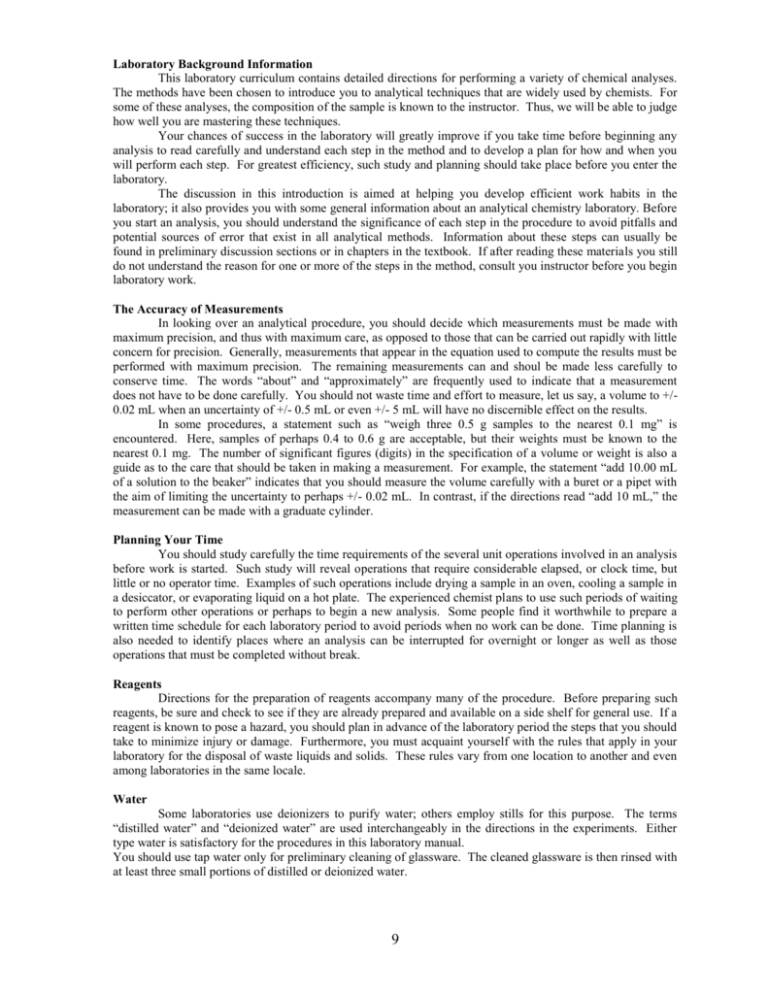
Laboratory Background Information This laboratory curriculum contains detailed directions for performing a variety of chemical analyses. The methods have been chosen to introduce you to analytical techniques that are widely used by chemists. For some of these analyses, the composition of the sample is known to the instructor. Thus, we will be able to judge how well you are mastering these techniques. Your chances of success in the laboratory will greatly improve if you take time before beginning any analysis to read carefully and understand each step in the method and to develop a plan for how and when you will perform each step. For greatest efficiency, such study and planning should take place before you enter the laboratory. The discussion in this introduction is aimed at helping you develop efficient work habits in the laboratory; it also provides you with some general information about an analytical chemistry laboratory. Before you start an analysis, you should understand the significance of each step in the procedure to avoid pitfalls and potential sources of error that exist in all analytical methods. Information about these steps can usually be found in preliminary discussion sections or in chapters in the textbook. If after reading these materials you still do not understand the reason for one or more of the steps in the method, consult you instructor before you begin laboratory work. The Accuracy of Measurements In looking over an analytical procedure, you should decide which measurements must be made with maximum precision, and thus with maximum care, as opposed to those that can be carried out rapidly with little concern for precision. Generally, measurements that appear in the equation used to compute the results must be performed with maximum precision. The remaining measurements can and shoul be made less carefully to conserve time. The words “about” and “approximately” are frequently used to indicate that a measurement does not have to be done carefully. You should not waste time and effort to measure, let us say, a volume to +/0.02 mL when an uncertainty of +/- 0.5 mL or even +/- 5 mL will have no discernible effect on the results. In some procedures, a statement such as “weigh three 0.5 g samples to the nearest 0.1 mg” is encountered. Here, samples of perhaps 0.4 to 0.6 g are acceptable, but their weights must be known to the nearest 0.1 mg. The number of significant figures (digits) in the specification of a volume or weight is also a guide as to the care that should be taken in making a measurement. For example, the statement “add 10.00 mL of a solution to the beaker” indicates that you should measure the volume carefully with a buret or a pipet with the aim of limiting the uncertainty to perhaps +/- 0.02 mL. In contrast, if the directions read “add 10 mL,” the measurement can be made with a graduate cylinder. Planning Your Time You should study carefully the time requirements of the several unit operations involved in an analysis before work is started. Such study will reveal operations that require considerable elapsed, or clock time, but little or no operator time. Examples of such operations include drying a sample in an oven, cooling a sample in a desiccator, or evaporating liquid on a hot plate. The experienced chemist plans to use such periods of waiting to perform other operations or perhaps to begin a new analysis. Some people find it worthwhile to prepare a written time schedule for each laboratory period to avoid periods when no work can be done. Time planning is also needed to identify places where an analysis can be interrupted for overnight or longer as well as those operations that must be completed without break. Reagents Directions for the preparation of reagents accompany many of the procedure. Before preparing such reagents, be sure and check to see if they are already prepared and available on a side shelf for general use. If a reagent is known to pose a hazard, you should plan in advance of the laboratory period the steps that you should take to minimize injury or damage. Furthermore, you must acquaint yourself with the rules that apply in your laboratory for the disposal of waste liquids and solids. These rules vary from one location to another and even among laboratories in the same locale. Water Some laboratories use deionizers to purify water; others employ stills for this purpose. The terms “distilled water” and “deionized water” are used interchangeably in the directions in the experiments. Either type water is satisfactory for the procedures in this laboratory manual. You should use tap water only for preliminary cleaning of glassware. The cleaned glassware is then rinsed with at least three small portions of distilled or deionized water. 9

